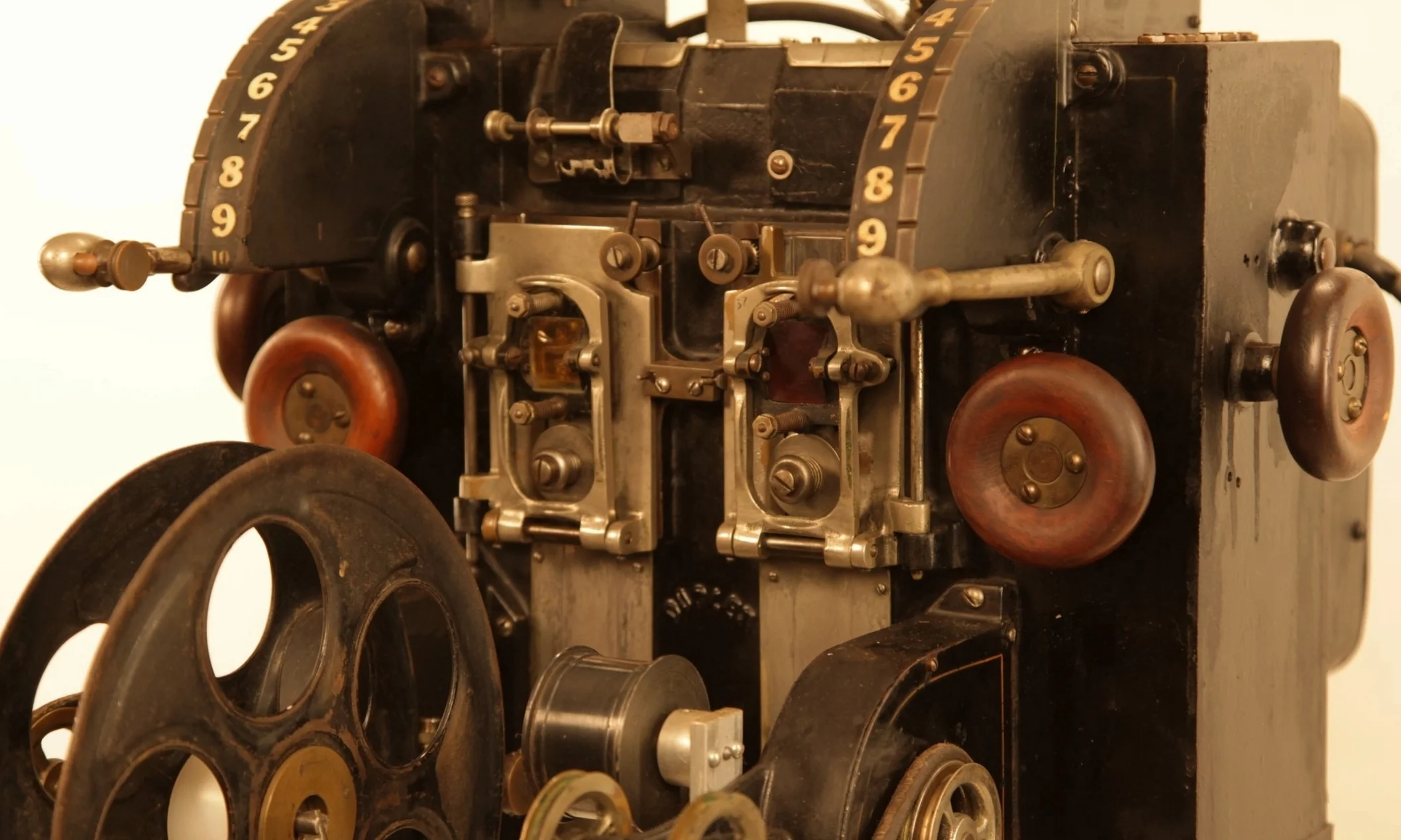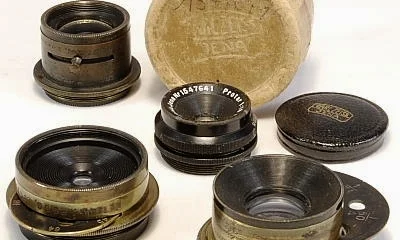The unique components of the exhibit will make The First CineMakers an experience like no other, with multimedia components to bring it all to life.
Highlights
1897 LUMIÉRE CINÉMATOGRAPH NO. 419
Designed by brothers Auguste and Louis Lumiére, and considered by most to be the first true cinema camera, No. 419 was acquired by Don Malkames directly from Francis Doublier, Lumiére's pioneer camera operator. Doublier also appeared in Workers Leaving the Lumière Factory, widely considered the first motion picture film ever shown in public.
1896 60MM DEMENY CHRONOPHOTOGRAPH NO. 48
Originally designed by Georges Demeny for the study of movement, and produced by Léon Gaumont in Paris, No. 48 is one of a handful of 60mm Demeny Chronophotographs remaining in existence, and will be displayed alongside its original printer. No. 48 was owned by the renowned American travel photographer Burton Holmes and his assistant Oscar Depue to shoot the first travelogue films ever recorded in Venice, Milan and France.
1902 35MM BIOSCOPE NO. 207
After using the bulky 60mm Chronophotographe, Oscar Depue saw the advantage of the smaller 35mm film gauge that was beginning to become the general standard. Depue purchased Bioscope No. 207 from Charles Urban of the Warwick Trading Company in 1902 and used the camera on Holmes travelogues until he gave the camera to his nephew Edward Jesse Green in 1917, who continued to use the camera on newsreels.
1910 35MM PATHÉ NO. 882
The Pathé Professional, a direct descendent of the Cinématographe, was the most widely used cinema camera in the early 1900s. No. 882 was American pioneer cinematographer Billy Bitzer’s personal camera, and was used on Birth of a Nation, Intolerance and other classic collaborations with Director DW Griffith. Bitzer personally gifted this camera to Don Malkames.
PRE-1920 AKELEY CAMERA NO. 315
The Akeley “Pancake” camera was one of the earliest examples of a camera rig specifically geared towards travel, wildlife, and newsreel production. No. 315 was owned by cameraman James J. Seeley to produce Hearst News' long-running News of the Day series. On May 6, 1937 Seeley's team, utilizing this Akeley, were one of the four newsreel crews that captured the unforgettable footage of the tragic Hindenburg disaster.
1909 35MM MOY & BASTIE CAMERA NO.196
Moy No. 194 was American cinematographer George Hollister’s personal camera, and was used to shoot the 1912 film, From the Manger to the Cross, one of the first features ever to be shot on location, with scenes filmed in Jerusalem, Bethlehem, and other authentic locations in Palestine. In the mid 1910's, Hollister modified this camera to shoot in Kinemacolor, an early attempt to simulate four-process color, in camera, during exposure.
1919 BELL & HOWELL NO. 420
Bell & Howell's Model 2709 camera, first produced in 1912, was a complete reimagining of the film camera, and soon earned its reputation as “the most precision film mechanism ever made”. No. 420 was owned by cinematographer Clyde DeVinna, who used the camera to shoot White Shadows (1928), which won the Academy Award for Best Cinematography, as well as the Academy award nominated best picture, Trader Horn (1931).
Components
THE MALKAMES COLLECTION
Carefully curated cameras, tripods, lenses, and related devices from the seminal days of cinema, selected for their historic relevance, and designed to inspire and inform. All collection pieces are in pristine and working condition.
PERIOD CURIOSITIES
Pieces additional to cameras include projection devices, printers, posters and photos relating to the era and specifically to the collection.
HISTORICAL DOCUMENTS
Materials include manuals, technical artifacts and historic documents relating to the era and collection.
PIECES ON LOAN
In order to create as complete an account of the period as possible, we plan to work with the French Cinémathèque in Paris, as well as private collectors, to include additional pieces of historical or inspirational significance.
Multimedia
It is our aim to utilize stills, video, interviews and audio to create the narrative around each exhibit that best describes the significance and essence behind each display.
SELF-GUIDED AUDIO / VISUAL TOUR
The self guided tour will include a mobile audio / video app component, walking attendees through all significant pieces, utilizing the Google Beacon platform or equivalent technology.













